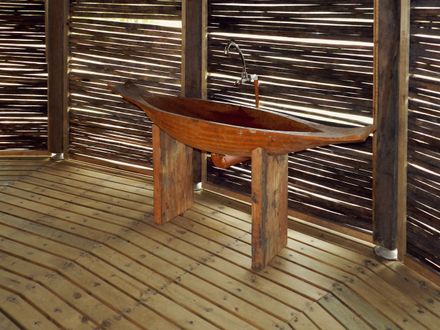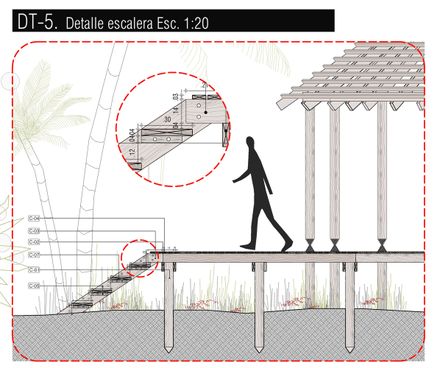Kipará Té Embera Tourist Etno-village
Kipará Té Embera Tourist Etno-village
Juan Pablo Dorado + Oficina Suramericana De Arquitectura
ARCHITECTS
Juan Pablo Dorado, Oficina Suramericana De Arquitectura
STRUCTURE
Jorge Obed Gomez
BUILDING CONTRACTOR
Dorado Asociados Sas, Grupo Conservacion Conguadua, Jaime Botero Medina, Juan Pablo Dorado Martinez
CLIENT
Indigenous Community Puerto Jagua, Fontur (Tourism Promotion Fund Of Colombia),
Mincit (Ministry Of Commerce Industry And Tourism)
ARCHITECTURAL DESIGN AND TECHNICAL STUDIES COORDINATION
Juan Pablo Dorado + Luis Aya, Luisa Fernanda García, Luis Fernando Medina, Yeferson Bernal
WORKSITE CHIEF ARCHITECT
Leonardo Adolfo Rodríguez
PHOTOGRAPHS
Tomas Botero
YEAR
2014
LOCATION
Nuquí, Colombia
CATEGORY
Hospitality Architecture, Community Center
Text description provided by architect.
This indigenous community is known as Puerto Jagua, along the Chori River near the town of Jurubirá which in turn belongs to the municipality of Nuqui, Chocó, on the Colombian Pacific coast.
These people has historically lived around these water bodies, which are essential not only for the amount of resources they provide, but because they are transportation routes and places with great cosmogenic meaning.
Its origin is a mythical beach at the Baudo River and they are currently settled in the departments of Antioquia, Bolivar, Caldas, Caquetá, Cauca, Chocó, Córdoba, Nariño, Putumayo, Risaralda and Valle del Cauca. Their language is a division of the linguistic family Chocó.
The proposal arises from reinterpreting the native habitat in order to understand and develop their traditional ways of life itself with analysis of physical, biological and socio-cultural elements of the community, this is a mean for understanding their culture and daily life.
acknowledging this, the new settlement firstly foresees for the location of the most important building in the highest part of the worksite, thus creating a linear landscape of events; the structure itself is understood as an elevated platform that generates small actions like meeting, sleeping, eating, etc.
And said platform is conceived as a protective element from flooding in the rainy season, but it remains a very subtle element that leverages levels and heights and which is lost in vegetation generating minimal impact.
The supporting structure is seen as a slender and subtle element that loses proportion to meet the main building of the complex, besides giving it the three most important qualities being proportion, accessibility and visual reference, a platform that makes it protagonist in the new settlement.
All secondary buildings are arranged to a greater terrain height than the elevated platform contributing to the experience lived by the tourists and generating the same feeling that occurs when entering the homes of the Embera community.
All the sleeping huts (known as Tambos) are accompanied by a smaller building that refers to the meeting place and reinterprets the typology of community livability.
"A project that comes from the depths of the jungle, by and for them, Indigenous people, an experience where the ancestral knowledge and current techniques forge together, a foray into new territory, where the basic is the true way of life.
Burst and break routines to achieve a community project, an experience of life where the exchange of knowledge was not only professional but personal.
Teaching and learning an universal constant anywhere in the world today, sharing, keyword to achieve the engagement between the micro and the macro, a project that leaves us with a lot of teachings, only to improve, for them and us, a project not only for a community but to a region, Chocó, a land that can be better than it already is.
Today I see a community proud of what they are, with all the capabilities to test what they have learned and also to continue growing next to what they have, their culture and customs.
A community that stays in my retina, a reality that I could live from within, from the depths of the jungle, a project born today and all of us that were part of this project in all of its different stages let us be better than yesterday... “. Worksite chief architect Leonardo Rodriguez.

















































